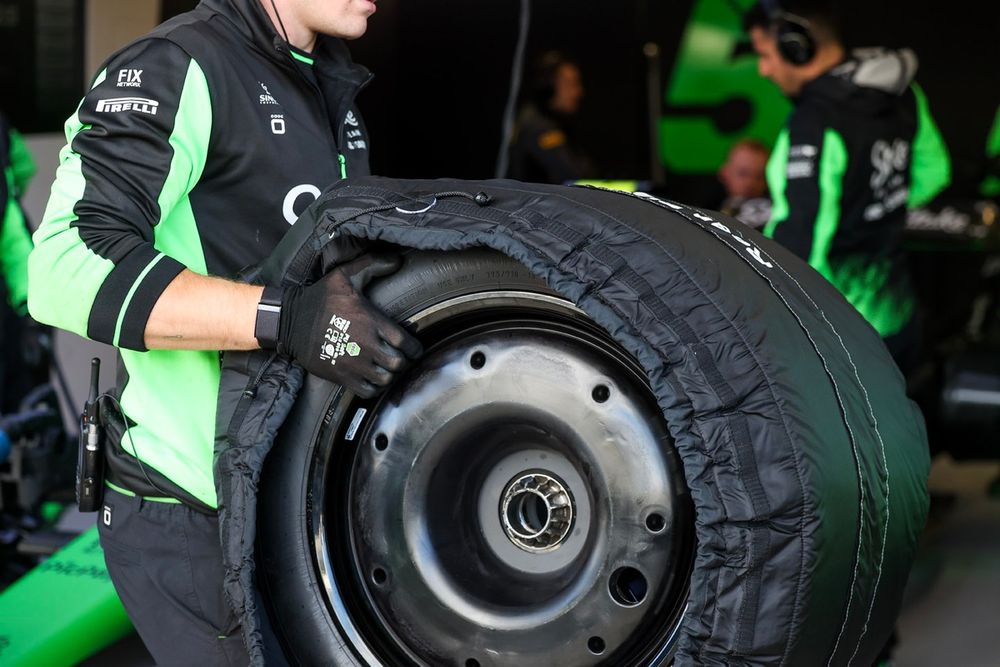A planned undertaking by Pirelli, in development since the early days of May, faces potential difficulties given weather predictions for the Belgian Grand Prix this week.
The recent high-temperature period across north-west Europe has yielded to a low-pressure weather system that is drawing in precipitation from the Atlantic. Substantial rain and thunderstorms are anticipated, with accumulations as high as 50mm in the UK, northern France, and Belgium throughout the upcoming days.
Considering that the initial events of the Formula 1 season advanced along somewhat predictable paths, and the vast majority of competing teams employed single-stop strategies as a default, the designated tyre provider for F1 determined it was necessary to formulate an innovative plan to present a degree of uncertainty in the decision-making process.
Given that the complete selection of tyre types is officially confirmed at the commencement of the racing season, and no alterations are permitted, the generation of strategic unpredictability necessitates a divergent approach to the employment of the available tyre compounds. To this end, Pirelli made the choice to assign the C1 compound, as opposed to the C2, as the hard-compound tyre for the Belgian event.
The medium and soft tyres will continue to be the C3 and C4, mirroring the previous year’s allocation.
“They [teams] invariably discover a method to execute a strategy based on a single stop,” stated Mario Isola, the motorsport manager at Pirelli, at that point in time.

Tyres will be a talking point at Spa – but the chat could be around wet compounds rather than dry ones
Photo by: Pirelli
“It is not necessarily our aim to compel teams to employ a two-stop strategy due to its potential for enhanced excitement, unpredictability, and overall race quality; however, with the minimal performance differences among the three tyre compounds, teams consistently endeavor to utilise the hard and medium compounds to facilitate a single-stop approach.”
The central concept is that by amplifying the variance between the hard and medium tyre compounds, the pursuit of a single-stop strategy is anticipated to result in a time-related disadvantage for each lap completed. Teams typically aim to restrict pit stops to a solitary occasion, as this approach tends to safeguard their position on the track and diminishes the possibility of operational issues occurring during pit stop procedures.
Under optimum circumstances, adjacent tyre compounds would consistently exhibit distinctly defined attributes concerning both endurance and grip capabilities. Nevertheless, significant disparities are observed in the designs and surface qualities of the race tracks, while variable weather conditions can also exert an influence on performance.
Furthermore, during the preceding year, Pirelli was provided with a ‘target letter’ that delineated the essential parameters for the tyres to be employed in the current season. Among the stated requirements was the directive for reduced susceptibility to thermal degradation, with the intention of empowering drivers to exert increased levels of force on the tyres for extended durations.
Pirelli has effectively met these objectives; however, this achievement has been accompanied by specific collateral effects, most notably a transition towards what are essentially single-stop races. The convergence of performance metrics across various vehicles has rendered overtaking maneuvers more arduous, giving rise to races characterised by limited positional changes.
By deliberately introducing this compound ‘step’ during a sprint weekend, Pirelli aimed to introduce supplementary complexities concerning tyre selection. While the demanding high-speed characteristics of the Spa circuit aligned well with the intention to assess a progression in the more durable tyre compounds, the unpredictable weather patterns in the Ardennes region have consistently posed challenges.
In the event that precipitation disrupts the proceedings, as it did during the Miami weekend, a noteworthy race may materialise regardless; however, Pirelli will be compelled to replicate the experiment at another location. The execution of this process is more intricate than may be perceived by casual observers, as it is not merely a matter of randomly substituting one compound for another.
Should the disparity between tyre compounds be excessively pronounced, the ultimate outcome mirrors that of an insufficient gap: teams will gravitate towards convergent strategies. Belgium was perceived as the optimal site for this undertaking; however, if circumstances preclude its implementation there, available options are becoming increasingly scarce.














